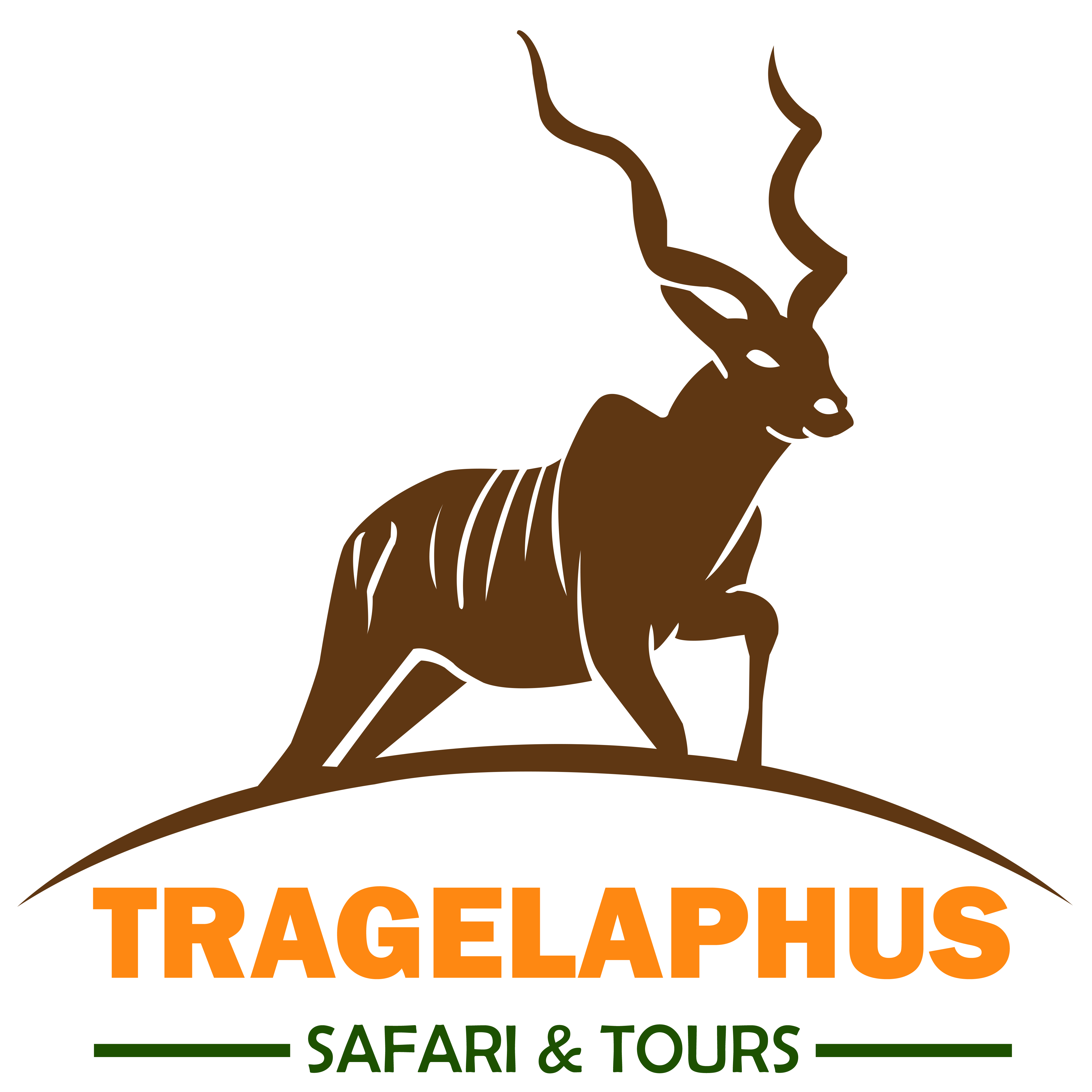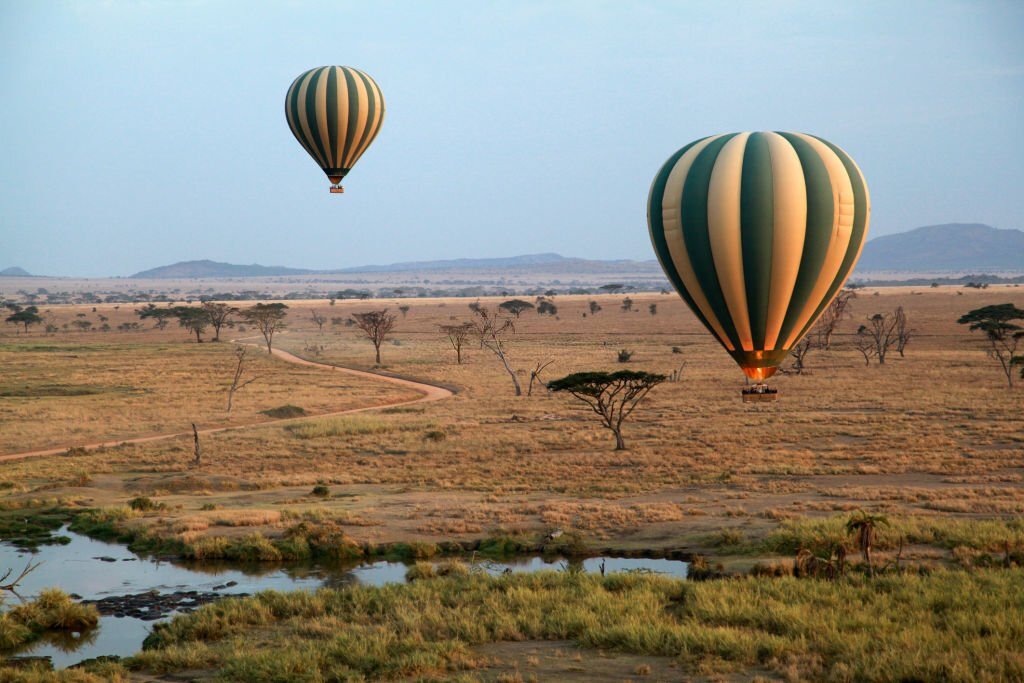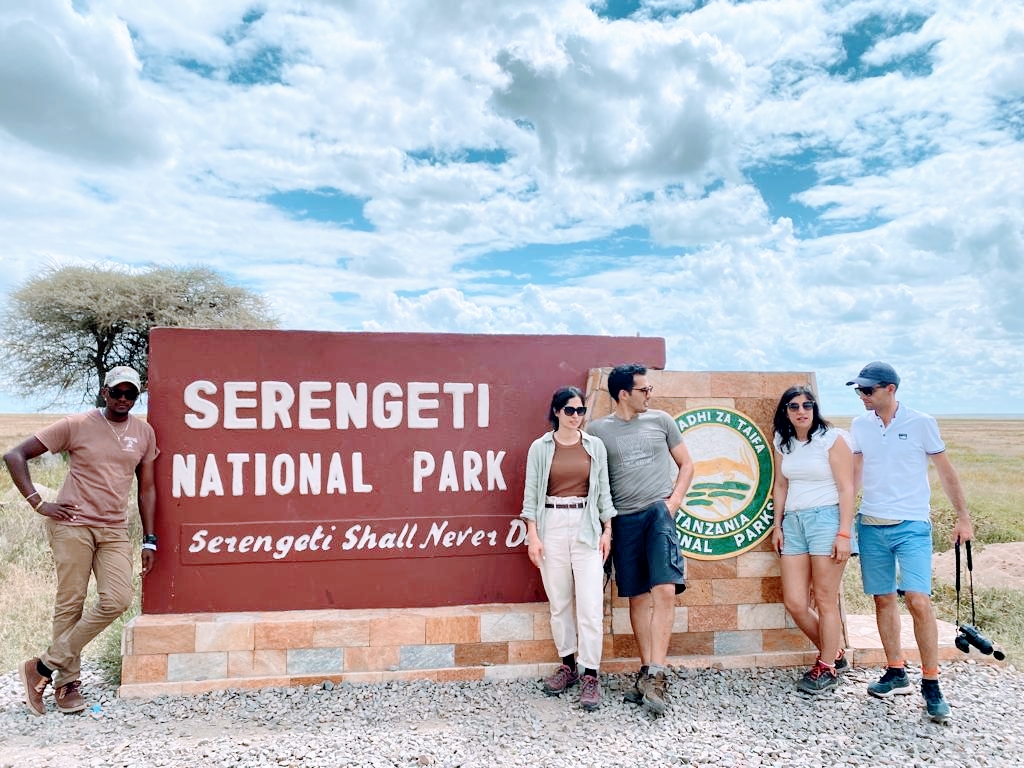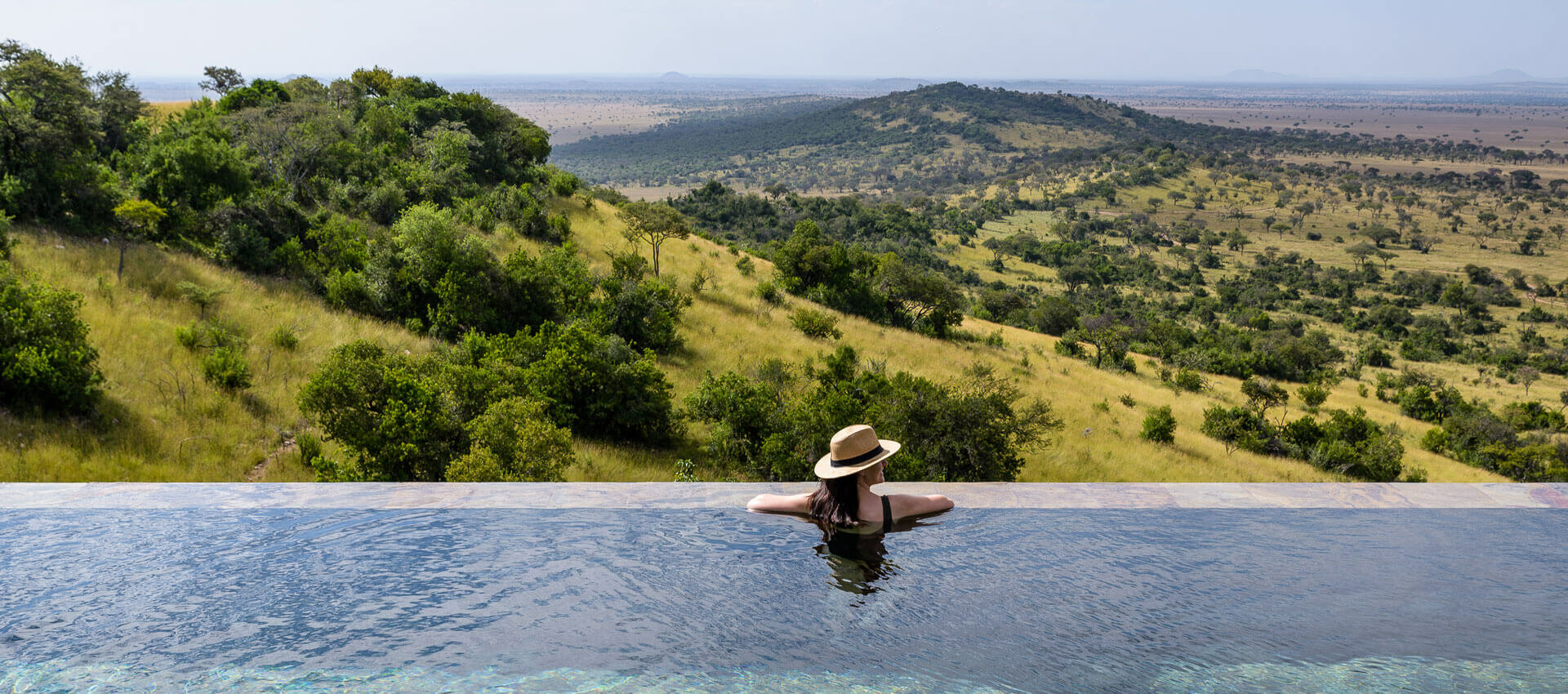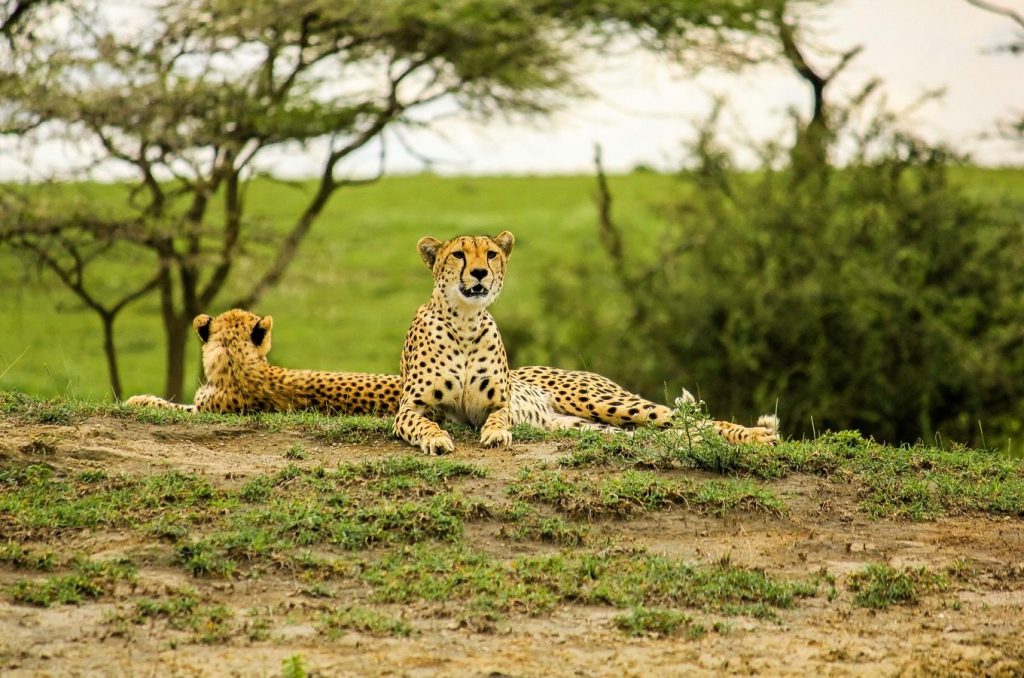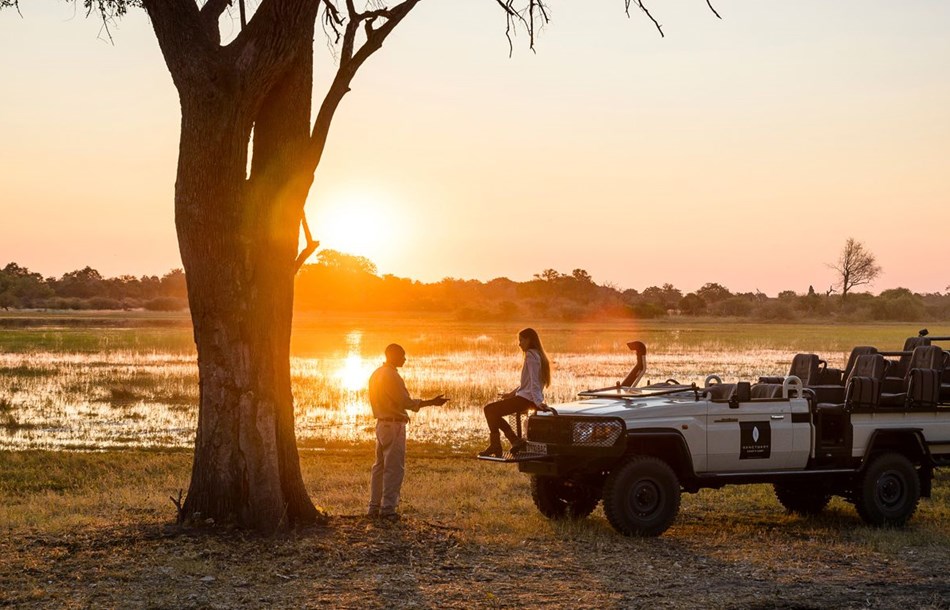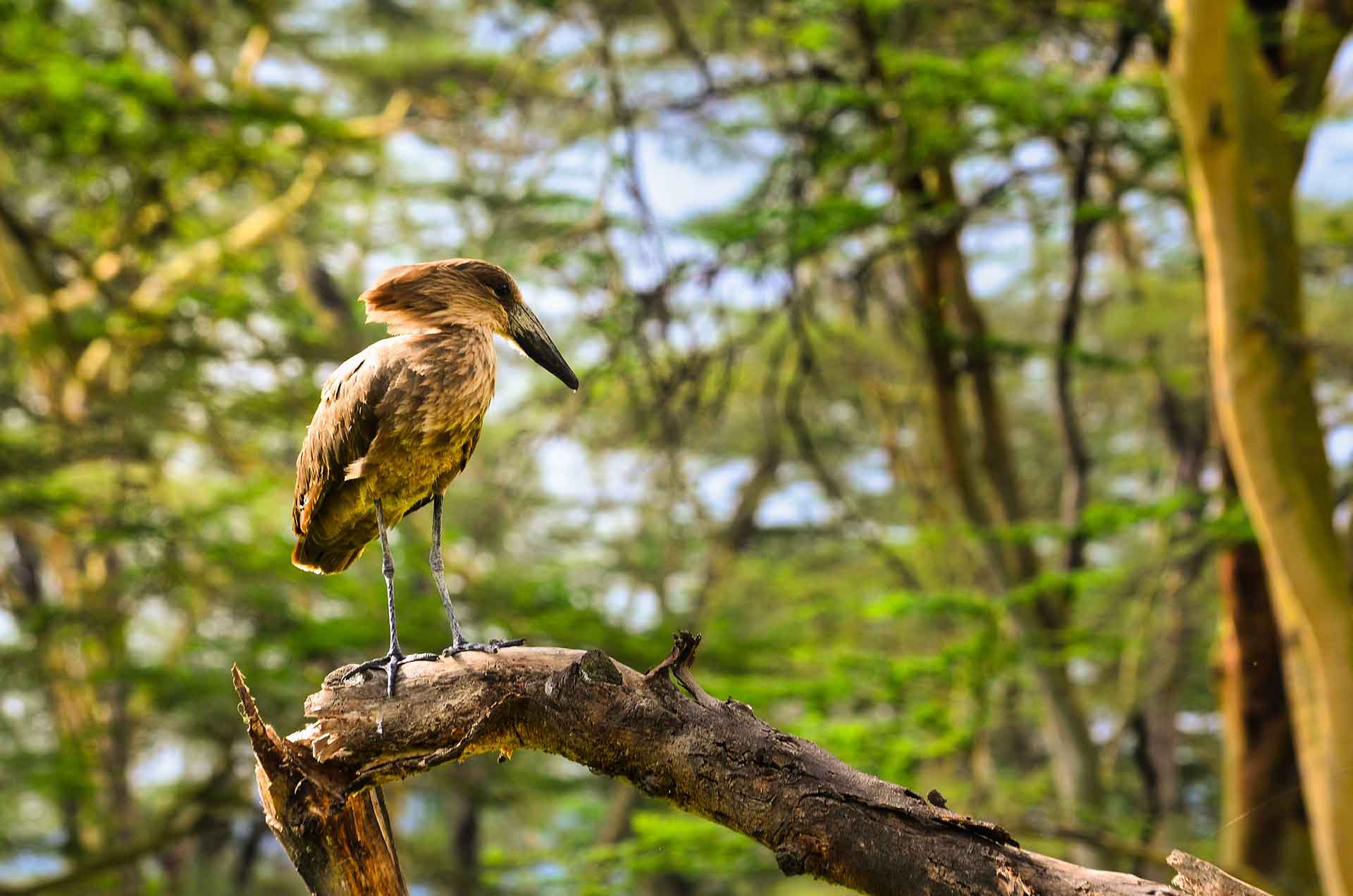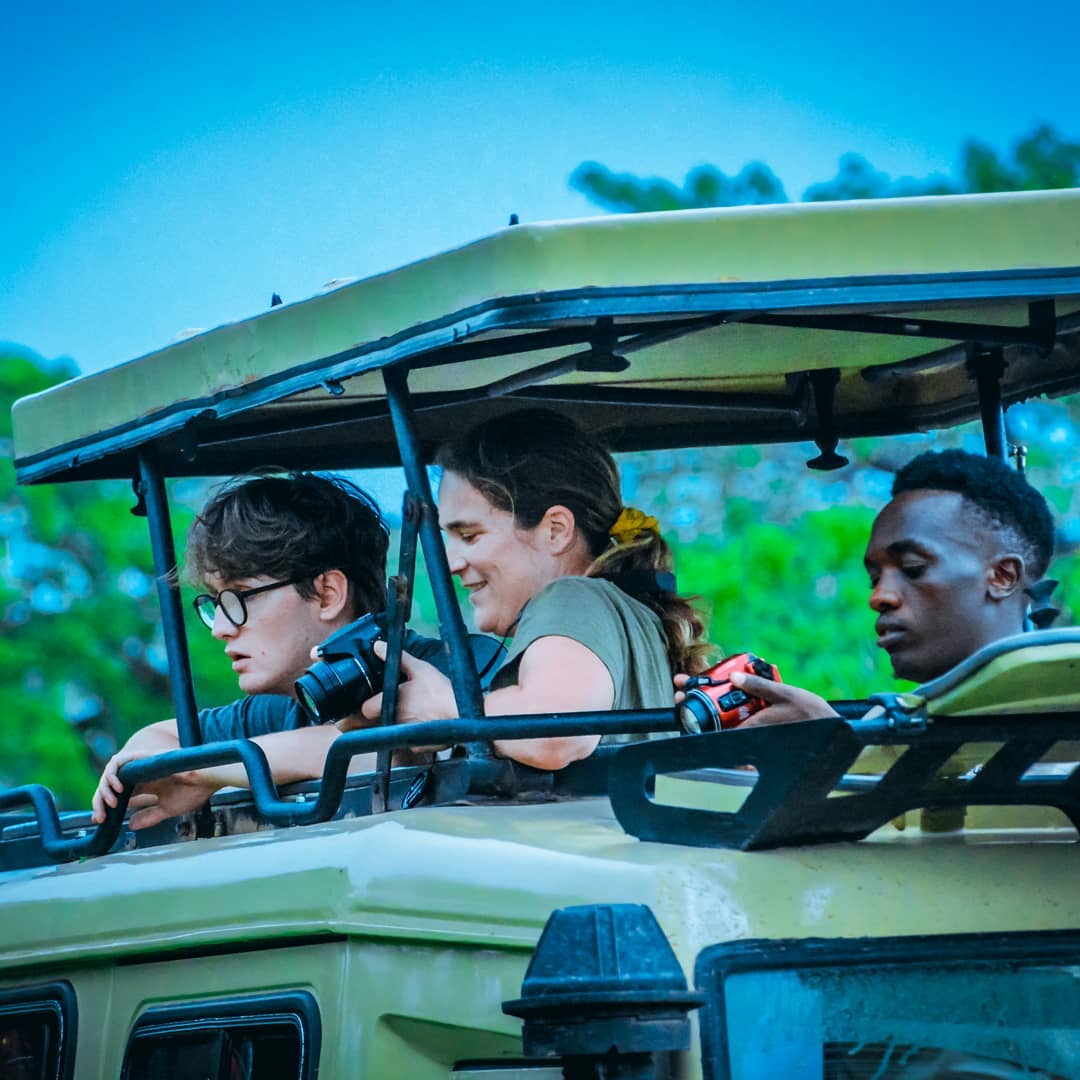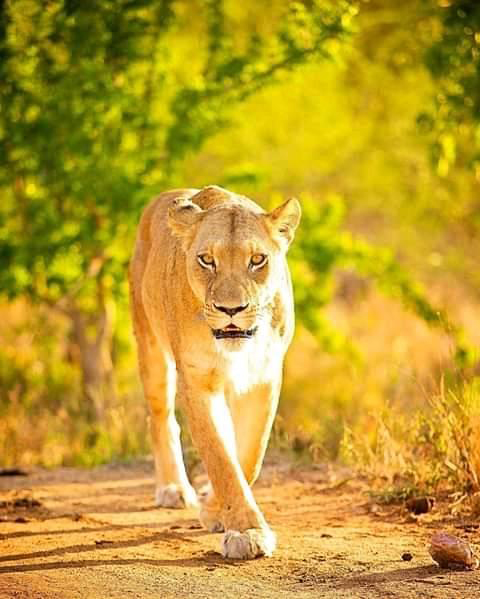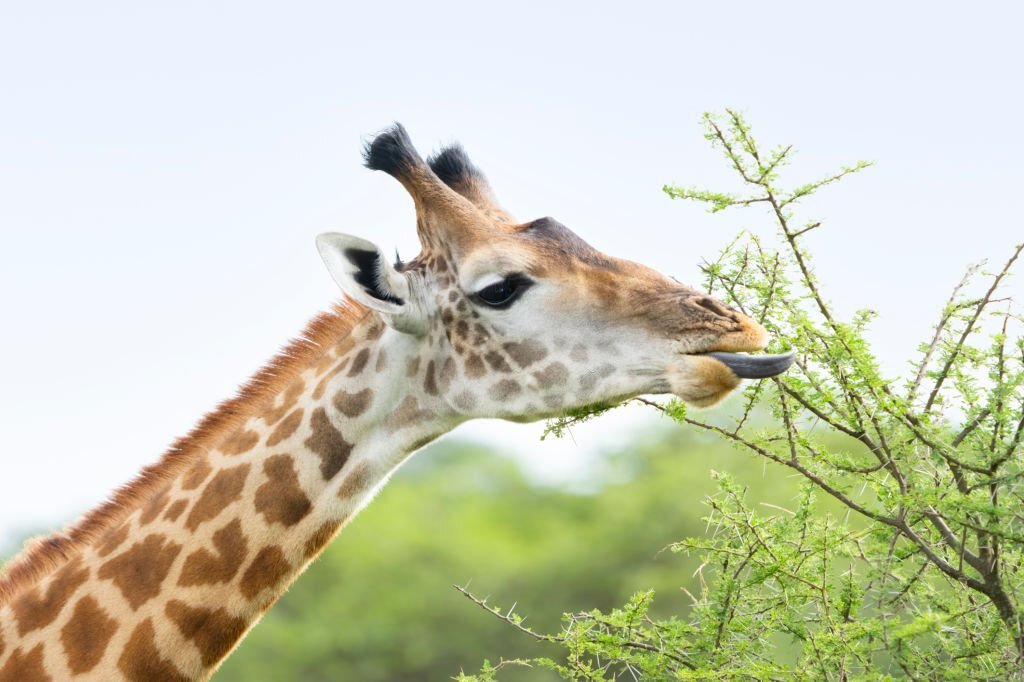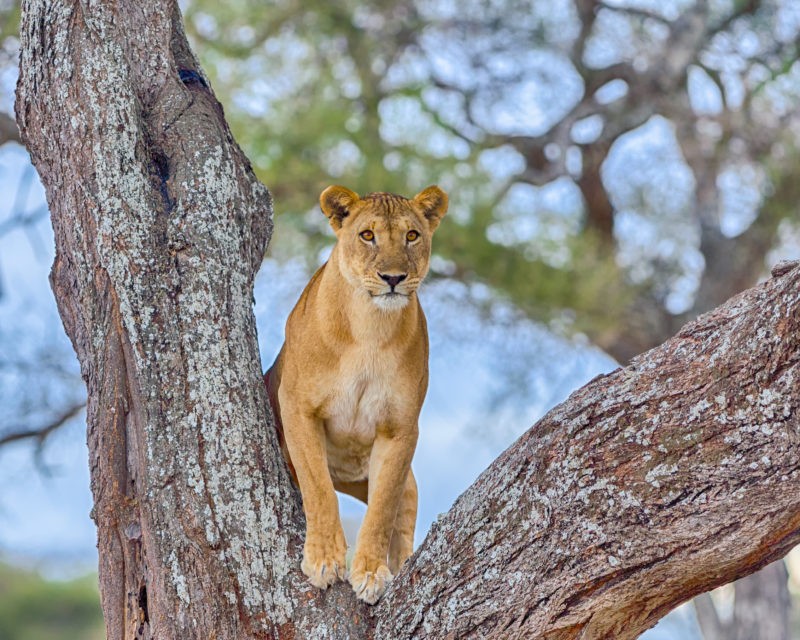
More Details About Serengeti
Get something new in Serengeti!
About Serengeti National Park
What's Serengeti?: The name, Serengeti, is derived from the Maasai word siringit, meaning “endless plains.” An accurate description considering the whole ecosystem stretches over 12,000 square miles (30,000 square kilometers). What does Serengeti mean in swahili?: The Pride Lands film setting is a reflection of the Serengeti (which means “endless plains'' in Swahili). AlsoThe name "Serengeti" is often said to be derived from the word "seringit" in the Maasai language, Maa, meaning "endless plains".
The Serengeti ecosystem is a geographical region in Africa, spanning northern Tanzania. The protected area within the region includes approximately 30,000 km² of land, including the Serengeti National Park and several game reserves. Serengeti National Park is a world-famous wildlife reserve located in northern Tanzania. Here are some key points about Serengeti National Park:
Size and location: Serengeti National Park covers an area of about 14,750 square kilometers (5,700 square miles) and is situated in the Serengeti ecosystem, spanning across Tanzania and Kenya.
Biodiversity: The park is known for its rich biodiversity, home to an incredible variety of animals and plant species. It supports the famous Big Five (elephants, lions, leopards, African buffaloes, and rhinoceros), along with cheetahs, hyenas, giraffes, zebras, wildebeest, gazelles, hippos, crocodiles, and over 500 bird species.
Great Migration: Serengeti is famous for hosting the annual Great Migration, considered one of the most remarkable wildlife spectacles on Earth. Every year, millions of wildebeest, along with zebras and other herbivores, embark on a journey in search of fresh grazing lands. The migration involves dramatic river crossings, predator-prey interactions, and vast herds dotting the sweeping savannah plains.
Landscape: The park features diverse landscapes, including vast grassy plains, acacia woodlands, riverine forests, and rocky outcrops called kopjes. The iconic Serengeti plains provide an awe-inspiring backdrop for wildlife sightings.
Conservation Efforts: Serengeti National Park is committed to conservation and is recognized as a UNESCO World Heritage Site. Efforts are in place to protect the park's ecosystem, wildlife, and cultural heritage, and to promote sustainable tourism practices.
Accessibility: The park has multiple entry gates, and internal roads allow for exploration of various regions within the park. Airports in the nearby towns of Seronera and Grumeti offer convenient access to the park.
Serengeti-Mara Ecosystem: Serengeti National Park is contiguous with Kenya's Maasai Mara National Reserve, forming the Serengeti-Mara ecosystem. This transboundary conservation area allows wildlife to move freely between the two countries, further enhancing the preservation of migratory routes and genetic diversity.
Predators and Prey: Serengeti's diverse wildlife population includes a high concentration of predators. Along with lions, leopards, and cheetahs, the park is also home to spotted hyenas, African wild dogs, and a variety of smaller carnivores. The abundance of prey species, such as wildebeest, zebras, and gazelles, sustains these predator populations.
Olduvai Gorge: Located within the Serengeti ecosystem, Olduvai Gorge is an archaeological site of immense significance. It is renowned for its fossil discoveries and contributions to our understanding of human evolution. The gorge has yielded ancient hominin remains, stone tools, and other artifacts dating back millions of years.
What to do In Serengeti National Park
There are several exciting activities and experiences to enjoy in Serengeti National Park. Here are some things to do when visiting Serengeti:
Game Drives:
Game drives are the most popular activity in Serengeti. Experienced guides take visitors on safaris in specially adapted vehicles, providing opportunities to spot wildlife and explore different areas of the park. Game drives can be organized as half-day or full-day excursions.
Guided Walking Safaris & Nature Walks:
Guided walking safaris allow visitors to experience the Serengeti on foot, accompanied by armed rangers and professional guides. This activity provides a closer connection with nature, a chance to learn about smaller flora and fauna, and a different perspective on the landscape. Also, guided nature walks may be available in designated areas. Accompanied by an armed ranger and an experienced guide, explore the park on foot, learning about the flora, smaller wildlife, and the intricate ecosystem up close.
Birdwatching:
With over 500 bird species, Serengeti is a haven for birdwatchers. Spot colorful and diverse birdlife, including ostriches, secretary birds, eagles, vultures, flamingos, and many more. The park offers excellent opportunities for bird photography and observation.
Night Drives:
Some areas of Serengeti allow for night game drives, which provide a unique opportunity to observe nocturnal wildlife. Spot elusive creatures such as hyenas, leopards, servals, and a variety of smaller mammals that become active after sundown.
Relaxation:
While Serengeti National Park is primarily known for its wildlife and adventurous activities, there are opportunities for relaxation and rejuvenation as well. Here's how you can find moments of relaxation in Serengeti:
Luxury Lodges and Camps: Serengeti offers a range of luxury lodges and camps that provide a serene and comfortable environment for relaxation. These accommodations often feature luxurious amenities, spacious rooms or tents, and private decks where you can unwind and enjoy the tranquility of the wilderness.
Sundowners: Many safari operators offer sundowner experiences in Serengeti. Enjoy a refreshing drink while watching the sun set over the expansive plains. It's a peaceful and scenic moment to relax and reflect on the day's adventures.
Spa and Wellness: Some lodges and camps in Serengeti have spa facilities where you can indulge in massages, body treatments, and other wellness therapies. Pamper yourself and rejuvenate your body and mind after a day of game drives and activities.
Nature Walks: Guided nature walks in designated areas of the park allow you to connect with nature at a slower pace. Enjoy the sounds of the bush, the scent of the wildflowers, and the serenity of the surroundings. It's an opportunity to relax and appreciate the smaller details of the ecosystem.
Yoga and Meditation: Some lodges or private guides may offer yoga or meditation sessions in serene spots within the park. Engage in these mindful practices to find inner peace, enhance your connection with nature, and rejuvenate your spirit.
Wildlife Observation: Sometimes, relaxation can be found simply by sitting back and observing the wildlife. Find a comfortable spot in a safari vehicle or at a vantage point and take in the sights and sounds of the Serengeti. Observe the animals in their natural habitat, from the graceful movements of giraffes to the playful interactions of elephants. It's a peaceful and meditative experience.
What
Cultural Interactions & Experiences:
Serengeti is surrounded by Maasai communities, and cultural visits offer insights into their traditional way of life. Engage in cultural interactions, visit Maasai villages, learn about their customs, traditional dances, and crafts, and gain a deeper understanding of their rich heritage.
Wildebeest Calving Season:
One of the most awe-inspiring events in Serengeti is the annual wildebeest calving season, which occurs around February in the southern Serengeti plains. During this time, vast herds of wildebeest gather to give birth to their young, attracting predators and creating dramatic scenes of survival and renewal.
Wildlife Photography Workshops:
Join specialized wildlife photography workshops conducted by professional photographers in the park. Learn techniques to capture stunning images of wildlife and the Serengeti's picturesque landscapes while receiving guidance and tips from experienced photographers.
Balloon Safaris:
Hot air balloon safaris offer a unique perspective of the Serengeti. Float above the plains during sunrise and witness the stunning landscapes and wildlife from a bird's-eye view. Balloon safaris usually include a champagne breakfast upon landing.
Conservation Visits & Activities:
Serengeti National Park is involved in various conservation initiatives. Some tour operators offer the opportunity to visit conservation projects or research centers within the park, providing insights into the ongoing efforts to protect the wildlife and ecosystem. Also, Serengeti National Park is involved in various conservation initiatives. Some tour operators offer the opportunity to visit conservation projects or research centers within the park, providing insights into the ongoing efforts to protect the wildlife and ecosystem.
Off-Roading and Bush Camping:
In specific areas of the park, off-road game drives and bush camping may be permitted. This offers the chance to explore lesser-known parts of Serengeti and spend a night under the starry African sky, surrounded by the sounds of the wilderness.
Bush Breakfast and Bush Dinner:
Experience the thrill of dining in the wild with bush breakfasts and bush dinners. Enjoy a delicious meal surrounded by nature, often set up in scenic locations within the park. It's an unforgettable way to immerse yourself in the Serengeti's atmosphere.
Remember to plan your activities in advance, considering factors such as the weather, park regulations, and the availability of experienced guides. Each lodge or camp in Serengeti typically offers a variety of activities, ensuring a memorable and fulfilling experience in this remarkable national park.
Interesting facts In Serengeti National Park
Size and UNESCO World Heritage Site:
Serengeti National Park covers an area of approximately 14,763 square kilometers (5,700 square miles) in Tanzania. It is one of the largest national parks in Africa and has been recognized as a UNESCO World Heritage Site for its outstanding natural value.
Great Migration:
Serengeti is famous for hosting the Great Migration, one of the most remarkable wildlife spectacles on Earth. Each year, millions of wildebeest, along with zebras and gazelles, undertake a circular journey in search of fresh grazing. This epic migration is a continuous cycle that spans Serengeti and Masai Mara National Reserve in Kenya.
Biodiversity:
Serengeti National Park is home to a diverse range of wildlife, including over 70 species of large mammals and over 500 bird species. It supports a high density of predators such as lions, cheetahs, leopards, hyenas, and wild dogs.
Serengeti Ecosystem:
The Serengeti ecosystem is not limited to the national park boundaries. It encompasses a larger area that includes protected areas, game reserves, and multiple conservation areas. This ecosystem is crucial for the survival of numerous species and supports a delicate balance between wildlife, vegetation, and human livelihoods.
Olduvai Gorge:
Located within Serengeti, the Olduvai Gorge is an important archaeological site that has provided valuable insights into human evolution. Fossils, tools, and artifacts dating back millions of years have been discovered here, shedding light on our early ancestors and their way of life.
Ancient Migration Route:
The Great Migration that takes place in Serengeti is believed to be one of the oldest and most continuous mammal migrations on the planet. It has been happening for thousands of years, following a natural cycle dictated by the availability of food and water.
Night Skies:
Due to its remote location and limited light pollution, Serengeti National Park offers incredible opportunities for stargazing. On clear nights, the sky is adorned with a blanket of stars, offering a celestial display that is truly awe-inspiring.
Endangered Species:
Serengeti is home to several endangered species that are under threat, such as the black rhinoceros and African wild dog. Conservation efforts within the park focus on protecting and preserving these vulnerable species and their habitats.
What
Big Five:
Serengeti is part of the renowned African Big Five destinations, known for the presence of lion, leopard, elephant, rhinoceros, and buffalo. Spotting these iconic species in their natural habitat is a highlight of any safari in Serengeti.
Rock Art Sites:
The park is home to several rock art sites, particularly in the region known as Kondoa Irangi, located southeast of Serengeti. These ancient rock paintings provide a glimpse into the rich cultural history of the area and depict various scenes from the lives of early human inhabitants.
Dramatic Landscapes:
The park's landscapes are characterized by dramatic and contrasting scenery, ranging from sweeping grasslands to rugged hills and rocky outcrops. This diverse topography creates a visually stunning environment.
Tree-Climbing Lions:
Serengeti is known for its population of tree-climbing lions. Unlike most lions that prefer to stay on the ground, some prides in the park have developed a unique behavior of climbing trees, often seeking shade or vantage points to observe their surroundings.
Kopjes:
Serengeti is dotted with unique geological formations called kopjes. These rocky outcrops provide shelter, food, and vantage points for a variety of animals, including hyraxes, baboons, leopards, and lions. Kopjes are often picturesque and serve as popular subjects for wildlife photography.
Bird Diversity:
Serengeti National Park boasts an impressive bird population, with over 500 bird species recorded. From large raptors such as eagles and vultures to colorful bee-eaters and kingfishers, the park offers fantastic birdwatching opportunities for enthusiasts.
Climate & Seasons In Serengeti National Park
The best time to visit Serengeti National Park depends on your specific interests and what you hope to experience. Here are some factors to consider when planning your visit:
What's the best time to visit Serengeti National Park
Great Migration: If witnessing the Great Migration is a priority, the best time to visit Serengeti is during specific months:
>> December to March:
The herds are typically in the southern Serengeti plains, with the wildebeest calving season occurring around February.
>> June to July: The herds start moving towards the western corridor and Grumeti River.
>> August to September: The herds cross the Mara River into Kenya's Masai Mara National Reserve.
Dry Season (June to October): The dry season offers excellent game viewing opportunities as animals concentrate around water sources. Vegetation is less dense, making wildlife easier to spot. June to October is particularly recommended as temperatures are pleasant, and there is a lower chance of rainfall. This is also the time when predator-prey interactions are more frequent.
Birdwatching/Wet season (November to April): If you're interested in birdwatching, the wet season is ideal as many migratory bird species arrive, and resident species display vibrant breeding plumage. The peak birding months are typically December to March.
Balloon Safaris: Hot air balloon safaris are generally available year-round, depending on weather conditions. However, it's advisable to check with tour operators for specific availability during your planned visit.
Crowds and Accommodation(June to October): Serengeti National Park can be busy during peak seasons, especially around popular areas and during the Great Migration. If you prefer to avoid large crowds, consider visiting during the shoulder seasons or exploring the park's more remote areas.
However, it's important to note that Serengeti National Park is a year-round destination, and each season offers unique experiences. The wet season (November to April) can be less crowded, with lush landscapes, migratory birds, and the wildebeest calving season in the southern Serengeti plains from December to February.
So, Ultimately, the best time to visit Serengeti National Park depends on your specific interests. If you prioritize excellent game viewing and the chance to spot large concentrations of wildlife, the dry season is recommended.
January and February:
This is the dry season between two green seasons. A wonderful time to visit Serengeti National Park as this is the time during which all calves are born on the southern plains. This part has vast plains which are beautifully green in this period due to the rains.
What
March to May:
During this period there are a lot of clouds and there are showers on most days. It never rains all day. The average temperatures are around 26 degrees during the day and 16 degrees at night and sometimes even a lot cooler due to the cold fronts. The migration is in full swing and there is little tourism, which means you have many places to yourself.
June to October:
During this dry period the afternoon temperatures are around 25 degrees. The days are clear with blue skies. The grass is yellow and shorter. At night it cools down a bit, sometimes to around 15 degrees. The great migration is happening between the west and north of the park. September and October are highlights where the animals are in northern Serengeti and try their best to cross the rivers. This is a quieter period and you stay far in the north of the park against the Kenyan border. The south is known for its large numbers of cats, which can be seen very well during this period due to the lack of vegetation due to the drought.
November and December:
In this period, rain falls for around 30 days. Your safari won’t experience much disruption because it never rains all day. It is around 27 degrees during the day and around 15 degrees at night.
So, the exactly best time to visit Serengeti National Park is from January to February or from June to October due to the follow reasons or factors:
>> Dry season: which is considered the best time for wildlife viewing. The vegetation becomes sparse, and animals congregate around water sources, making sightings more predictable. It's an excellent time to spot the "Big Five" and witness the Great Migration as the herds move through the northern Serengeti and into the Masai Mara Reserve in Kenya.
>> Great Migration's calving season(June to October): During this time, the southern Serengeti plains come alive with the Great Migration's calving season. Witnessing the wildebeest giving birth and the predator-prey interactions is a remarkable experience. The region is known for its high concentration of wildlife and dramatic scenes of survival and renewal.
→ However, it's important to note that Serengeti National Park is a year-round destination, and each season offers its own unique experiences.
Pictures
Serengeti Pictures
Activities
What travellers most enjoyed
on this destination.
Guided Walking Safari
Wildlife And Safari
Bird Watching
Bush Meals
Boat Safari
Scenery
Bush Camping
Accommodations
Accommodations Found
on this destination.
Packages
Our Perfect Packages
Adventure, Family, Holidays, Wildlife.
Adventure, Family, Holidays, Wildlife.
Adventure, Family, Holidays, Wildlife.
Adventure, Family, Holidays, Wildlife.
Adventure, Family, Holidays, Wildlife.
Adventure, Family, Holidays, Wildlife.
Adventure, Family, Holidays, Wildlife.
